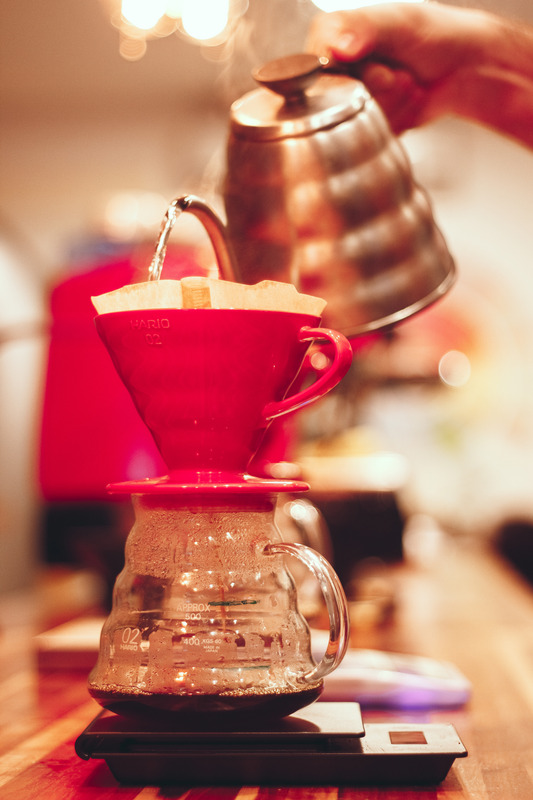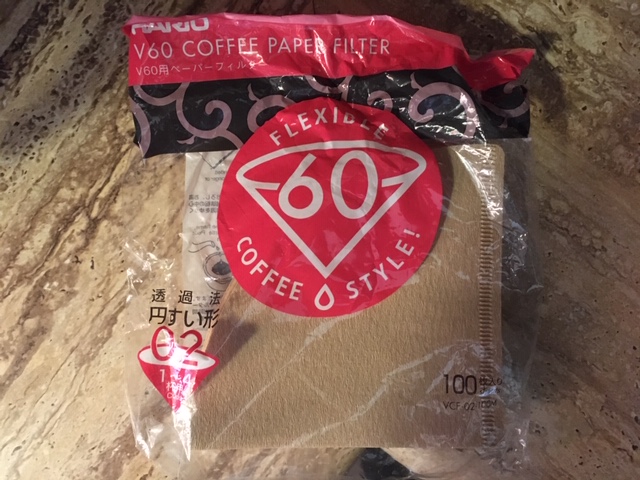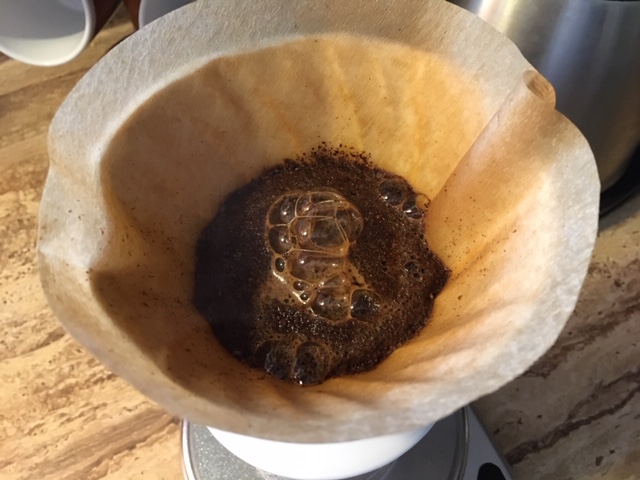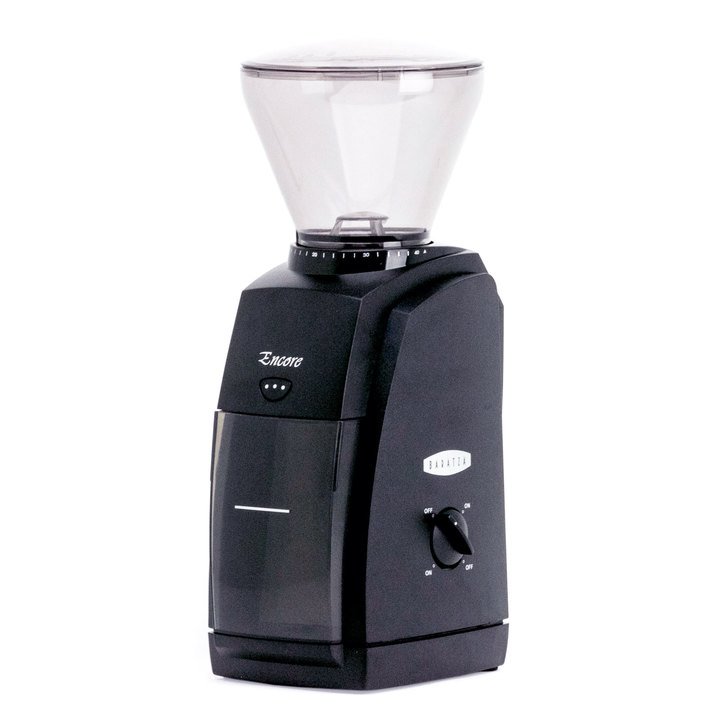brewing the perfect pour over

"The perfect pour over requires nothing more than quality beans, the correct grind, and precision in water temperature and the timing and execution of the pour. Concentric circles...wait, breathe...concentric circles. Wax on, wax off."
- Secret Wisdom of the Coffee Masters Vol. 1, 5th Ed.*
If you’re like me and you want to squeeze out every bit of flavor nuance from your coffee, you’ve probably already dove head first into the pour over method of brewing. It’s a great way to brew a flavorful cup of coffee, and it’s especially good for those times when you don’t need to make a full carafe of coffee. But it’s a brewing method that requires a bit of technique to get the most of it. Different baristas will favor a variety of techniques. However, there are a few techniques that are included in nearly every pour over how-to I’ve seen. Check these out and compare them to what you’re doing. It’s possible that a few simple adjustments will unlock some new flavor characteristics from your favorite beans.
If you’re new to the world of pour over brewing there are a few pieces of relatively inexpensive equipment you need.
First, you need a gooseneck kettle for maximum control in pouring the water over the grounds. The best I’ve found are from Japanese company Hario and American made Fellow Products. They make some of the best coffee products around, and their line of pour over products have become staples in many coffee shops. But there are plenty of other brands that make great kettles too, among them Bonavita and Cosori. Most of these brands offer stovetop models or electric ones. Note that some pour over kettles have thin bottoms and aren't recommended for use on stovetops on high settings. If you get one of these, consider heating it on low to medium heat, or heat your water in another vessel and use the kettle for the pour itself.
- Second, you'll need a dripper and filters. Again, Hario is my go-to. The V60 ceramic dripper and the unbleached filters they make are my top choices.
- Third, you need a kitchen scale that accurately measures grams and ounces. You'll need to weigh out your beans and water amounts. There are numerous brands of these. I use a relatively cheap one and have had no problems with it.
- Finally, a good coffee grinder. Burr mill grinders are the best, and you can't do much better than a Baratza burr grinder for home use. But if you're using a blade grinder here's a tip: As you grind, gently shake the grinder up and down a few times. This will help to reduce the chances of getting an uneven grind.
- So without further adieu, let's start the brew!
The first thing you need to do is prep all of your equipment. Go ahead and get out everything you need.
Filter, kettle, dripper and carafe or mug, and kitchen scale.
1.) Heat your water to just shy of boiling and insert filter into the V60. Rinse filter with hot water. Pour the water out.
2.) Place everything on the scale and use the TARE function to '0' it out.
3.) Grind your beans on a medium/fine setting.
4.) Pour grounds into the V60 and shake to make a flat bed of grounds.
5.) Pre-infuse the grounds with 48ml/g of water. Let bloom for 30 seconds.
(This step allows for CO2 to escape, which can give coffee a sour taste. In addition it prevents the water from coming into contact with the grounds to extract all the necessary flavor compounds. The darker the roast, the less CO2 there will be to begin with.)
6.) Pour water into the center of the grounds, spiraling outward and back in concentric circles.
7.) Pause when the funnel is half full, then continue filling until you are at 360 ml/g of water (just over 12 oz).
8.) As it drains, gently stir the grounds in a circle. This ensures full saturation and even extraction. (In this quick clip, I just used a normal kitchen spoon like some kind of animal. If you're a true pro however, you'll get a right proper barista stir stick made of bamboo or high-grade stainless steel.)
"Stir the slur you must!"
~ Coffee Master Doya
9.) Dispose of the filter and grounds in a manner befitting of a respectable human person. Toss them in the trash, put them on the compost, or use them for spent coffee ground artwork. Just don't leave them in the sink for someone else to clean up!
* = Currently a work of fiction, which is part of larger fantasy backstory that will unfold here. But like a fairy tale, it contains truths nonetheless. As the great G.K. Chesterton once said, "Fairy tales are not true because dragons exist. They are true because they tell us dragons can be defeated."
Prima Coffee Equipment carries a great lineup of espresso machines, drip brewers, pour over supplies, parts, and much more.
















